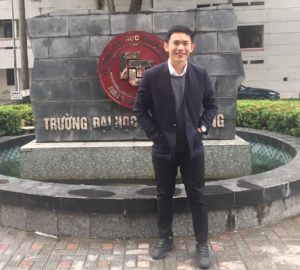
Buildings account for 38% of global emissions, nearly 75% of which come from operations of HVAC, lighting, and IT equipment. With CO2 emission reduction commitments, many building owners and investors plan to implement strategies to reduce emissions and energy consumption. In Europe, where a vast majority of the buildings will continue to be occupied well into the future, efficiency, and modernization of existing buildings is as important as Greenfield project efficiency. (To learn more, read our “Three emergency measures for the European energy crisis” eGuide.) New hybrid workplace environments further complicate the tasks facing building owners and investors.
On one hand, the focus on people-centricity is more important than ever. Bringing employees back to the office is vital since it supports employers’ vision and mission, as well as boosting employees’ face-to-face collaboration and efficiency. To this end, enterprises are implementing strategies to demonstrate not only safe but also healthy environments to ensure well-being and enhance productivity and comfort, which is also highly valued by talent. This includes sharing or collecting environmental data point values of lighting levels, CO2 emissions, PM 2.5 (particulate matter), and relative humidity.
On the other hand, non-modernized buildings’ HVAC systems are not designed to address empty or partially occupied buildings. Buildings need to be capable and resilient to provide efficient operations independent from the load it experiences at the current moment. CO2 emissions and energy consumption must meet HVAC data points and be as low as possible, even with partial load demand. If not, occupants could experience discomfort, and the building also may not be able to perform as it was designed.
In recent years we have seen a few modern solutions to track building loads in real time:
- Workplace management solutions, enabling people to count in workplaces spaces
- Integration of access control and visitor management systems
- Room sensors connected to the building management system with anonymous real-time people counting and beacon tracking
- Living space communicating multi-sensors that enable data-driven decisions about building environments
- Integrated room booking systems, which precondition a booked meeting room for quick start-up
But which newer solutions are able to react to load variation most efficiently? Significant developments now enable system integrators to use digital and connected products which can contribute to building operations with full or partial loads. For example:
- Application of variable speed drives on pumps has become a standard solution to improve energy costs. This highlights a need for hydronic system components, like terminal unit valves designed for variable flow and variable pressure operation. Thanks to the mechanical differential pressure regulator, this guarantees designed heating and cooling capacity in variable pressure systems.
- Smart actuators on terminal units application were initially overlooked due to higher upfront costs. But if we consider stability and their ability to control coupled with improved energy efficiency it provides to the main HVAC equipment by delta T control strategy, this creates an enormous opportunity for quality demand-driven control with the highest possible chiller, heat pump, and boiler efficiency.
- Air handling equipment, including air handling units, rooftops, and others, may be optimized by the implementation of variable speed drives on fans to address demand-based ventilation strategies.
In conclusion, the general trend in building electrification has proven its possibilities in main equipment (heat pumps and geothermal), but to address demand-driven control, terminal applications must be ready to provide load data along with a way to efficiently respond to demand. Two Schneider Electric locations in France demonstrate how digitally enabled technologies deliver increased efficiency and resiliency to buildings, both in new builds and as part of modernization journeys. Learn more in these case studies:
IntenCity, LEED Platinum-certified building in Grenoble, France
The Hive, LEED O+M Platinum for existing buildings in Paris, France



